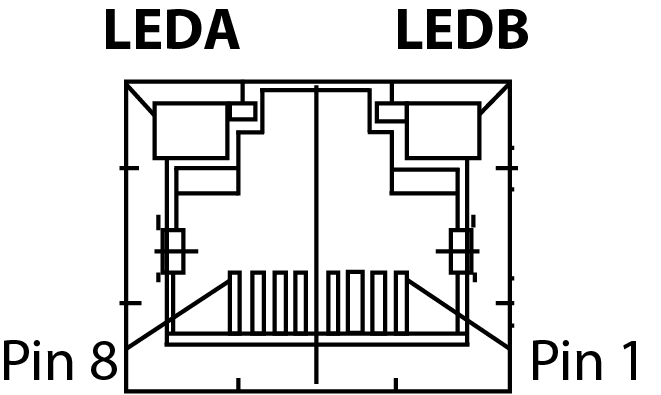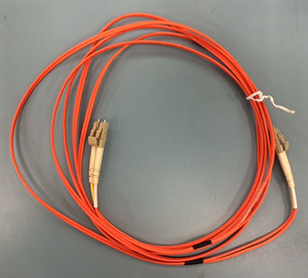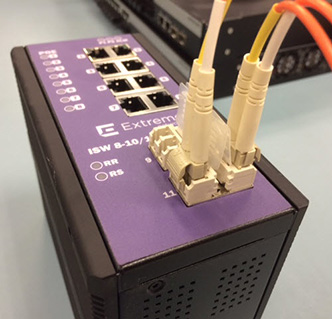Connect Network Interface Cables
Use the appropriate type of cable to connect the ports of your switch to another switch or router.
| Cable Type | Maximum Distance |
|---|---|
| CAT5E | 55 meters |
| CAT6 | 55 meters |
| CAT6A | 100 meters |
Use the Ethernet Interface with an RJ45 Connection
ISW-Series provides two types of electrical (RJ45) and optical (mini-GBIC) interfaces.
- To connect to a PC, use a straight-through or a cross-over Ethernet cable.
- To connect the copper port to an Ethernet device, use UTP (Unshielded Twisted Pair) or STP (Shielded Twisted Pair) Ethernet cables.

The pin assignment of RJ45 connector is shown in RJ45 Connector Pins and RJ45 Connector Pin Assignment.

| Pin | Assignment | PoE Assignment |
|---|---|---|
| 1, 2 | T/Rx+, T/Rx- | Positive VPort |
| 3, 6 | T/Rx+, T/Rx- | Negative VPort |
| 4, 5 | T/Rx+, T/Rx- | X |
| 7, 8 | T/Rx+, T/Rx- | X |
Use the Ethernet Interface with a Fiber Connection
For both 100/1000 Mbps fiber speed connections, the SFP slots are available. The SFP slot accepts the fiber transceivers that typically have an LC connector.
The fiber transceivers have options of multimode, single mode, long-haul, or special-application transceivers.
Prepare a proper SFP module and install it into the optical port. Then you can connect fiber optics cabling that uses LC connectors or SC connectors (with the use of an optional SC-to-LC adapter) to the fiber optics connector.
Refer to for the normal operational LED status.



Important
Never attempt to view optical connectors that might be emitting laser energy.Do not power up the laser product without connecting the laser to the optical fiber and putting the cover in position, as laser outputs will emit infrared laser light at this point.
Connect the Cables
Working carefully, one port at a time, do the following:
- Verify that you have identified the correct cable for the port.
- Use an alcohol wipe or other appropriate cleaning agent to clean the cable connectors; make sure they are free of dust, oil, and other contaminants.
- If you are using optical fiber cable, align the transmit (Tx) and receive (Rx) connectors with the correct corresponding connectors on the switch or the I/O module.
- Press the cable connectors into their mating connectors on the switch or I/O module until the cable connector is firmly seated.
- Repeat the preceding steps for the remaining cables on this or other switches or I/O modules.
- Dress and secure the cable bundle to provide appropriate strain relief and protection against bends and kinks.

